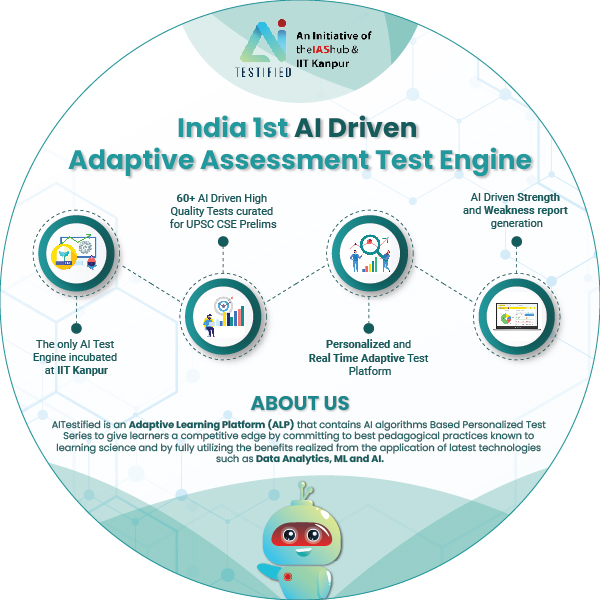Q. What are flash floods? What are the causes and consequences of flash floods in India ? (Answer in 150 words).
04 Oct, 2022
GS III
Daily Answer Writing 2022-23 ( Upgrade)
Modal Answer
Modal Answer
Flash floods are the floods caused by heavy or excessive rainfall in a short period of time, generally less than 6 hours. About 12% of India is prone to floods.
Causes of flash floods in India:
- Natural Causes:
- Heavy Rains or Cloudbursts:. E.g., the Kedarnath tragedy in Uttarakhand.
- Slow-moving thunderstorms. Eg: In Guwahati, causing landslides along with flash floods.
- Narrow and steep rivers: As they flow more quickly, leading to flash floods. Eg: Hora River in Agartala
- Man-Made Causes:
- Urban Concretisation: Hard surfaces prevent water absorption into ground E.g. Hyderabad flash floods 2020
- Construction failure: Dam or Levee Breaks.
- Deforestation: Land becomes obstruction-free and water flows with great speed.
- Climate change: Glacial melt leading to Glacial Lake Outburst floods. Eg. Chamoli flash Floods.
Consequences of flash floods in India
- Economic Impact
- Loss of Property & critical infrastructure (road, bridges, electricity è Reversal of developmental gains.
- Disruption of Economic activities – Halted industries, scarcity of essential commodities & rise in inflation.
- Fiscal burden on Govt – due to Post-disaster rescue & rehabilitation expenditure.
- Social Impact
- Loss of life: >5,000 lives lost annually.
- Compromised hygiene: Sewage being washed into houses may led to disease outbreak. Eg. Cholera.
- Public unrest - Increased stress; psychological trauma
- Ecological losses: Loss of biodiversity, fertile soil cover, growth of invasive plants (lantana camara), etc.
- including trees and plants being washed away during an extreme flood event.
Government has taken several steps to manage Flash Floods
- Two tier flood management:
- Central level: CWC, Brahmaputra board, Ganga Flood Commission, NDMA etc.
- State level: Water Resources Depts, Flood Control Board.
- Other initiatives: Intelligent early warning systems like IFLOWS (Eg. Mumbai), National Flood Commission (1980), R Rangachari Committee (2003), National Water Policy (2012) etc.
Way Forward:
Thus, Sustainable flash flood management calls for adoption of Disaster resilience mantra, that is, “to live with water, build with nature and make room for the river”.
- Structural measures: strengthening reservoirs, embankments, channelisation of rivers, etc.
- Prevention & preparedness: flood forecasting, flood plain zoning (recognise river’s right of way), flood proofing (Eg. UP), integrated flood management (water & land use) etc
- Coordination & Training of administrative functionaries, communities and last mile worker for better response.
- Ecological buffers: Conservation of wetlands (adding Ramsar Protection), afforestation etc,
Please login to upload your copy.
Uploaded Copies
No copies found.
